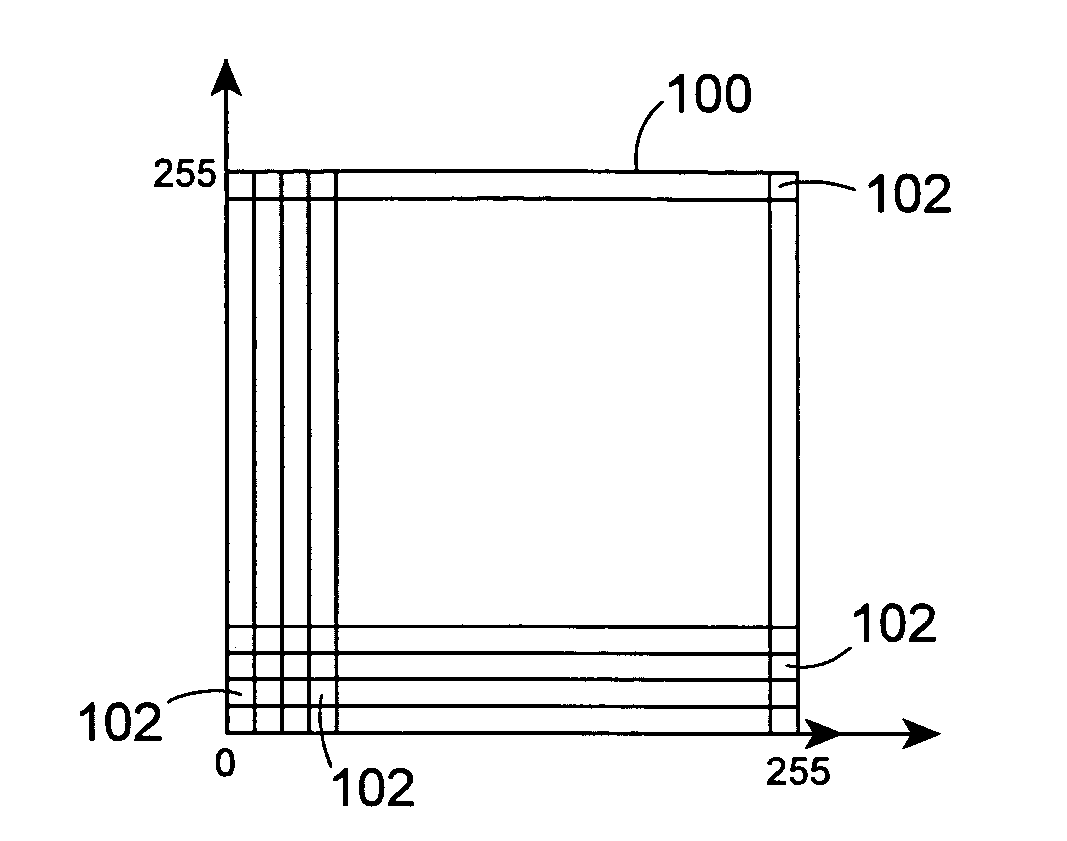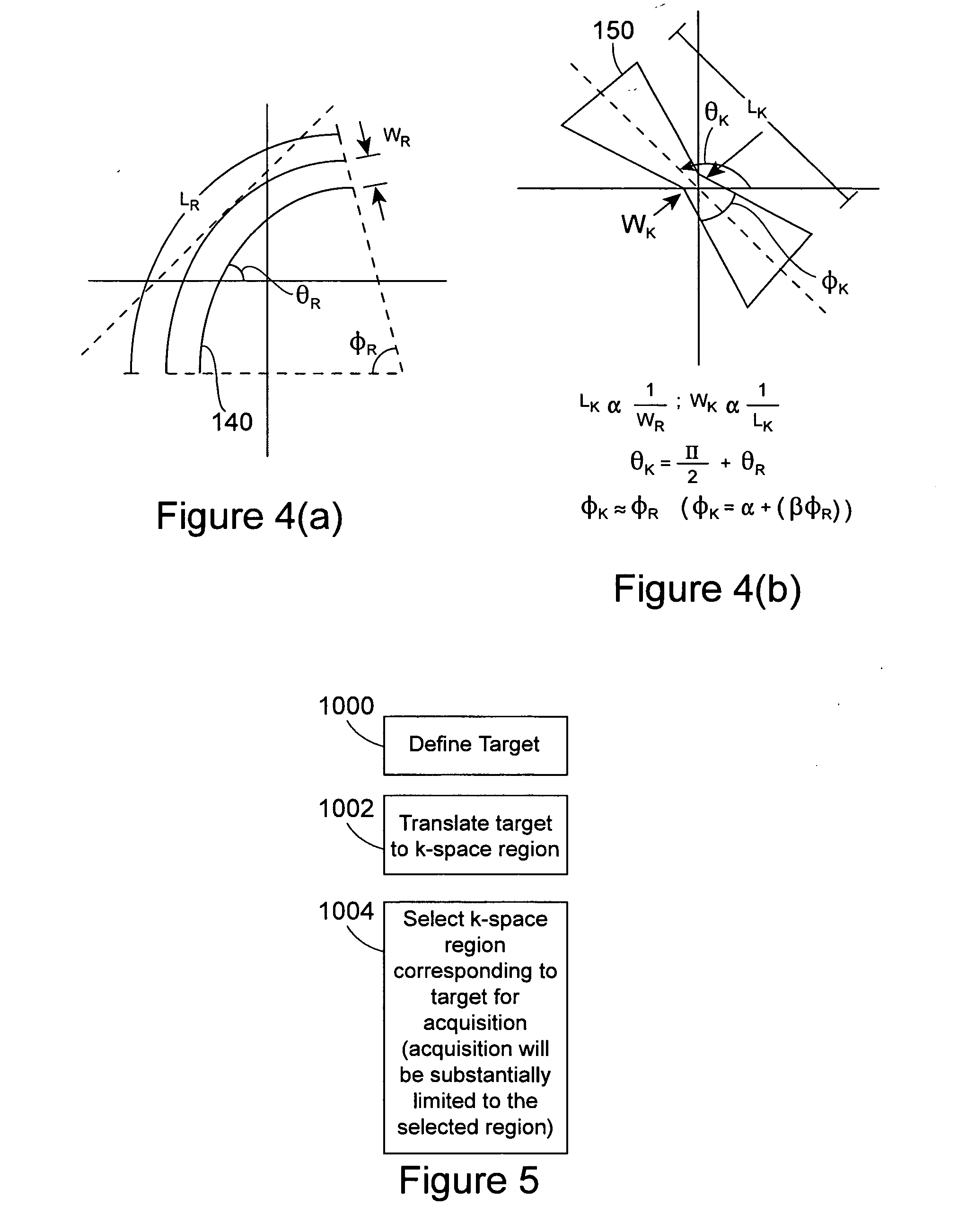Method and apparatus for magnetic resonance imaging using directional selective K-space acquisition
a magnetic resonance imaging and k-space technology, applied in the field of medical imaging, can solve the problems of time-consuming process that hinders the use of mri in an interventional manner, time it takes to acquire a full k-space data set, and time-consuming completion, so as to achieve quick acquisition of k-space data, reduce acquisition time, and high image quality
- Summary
- Abstract
- Description
- Claims
- Application Information
AI Technical Summary
Benefits of technology
Problems solved by technology
Method used
Image
Examples
Embodiment Construction
[0030] With reference to FIG. 1, and as is well-known in the art, the raw data produced by an MRI scan belong to a frequency space, known as k-space data (or raw data) and converted to the real-space image by way of a fast Fourier transform (FFT). The k-space data is expressed as m×m arrays such as the 256×256 array 100 with 65,536 data points 102, as shown in FIG. 1.
[0031] Under conventional techniques, the full 256×256 k-space data set is acquired, and the MR image is derived therefrom. However, as previously mentioned, it would be advantageous for MR systems to increase speed by acquiring only that portion of the k-space necessary to derive a quality image of the target of interest.
[0032] Toward this end, the inventors herein utilize correlations between target geometries in real space and their corresponding k-space representations. Once the basic geometry of the target in real space is known, the present invention determines the region of k-space that corresponds to such geom...
PUM
 Login to View More
Login to View More Abstract
Description
Claims
Application Information
 Login to View More
Login to View More - R&D
- Intellectual Property
- Life Sciences
- Materials
- Tech Scout
- Unparalleled Data Quality
- Higher Quality Content
- 60% Fewer Hallucinations
Browse by: Latest US Patents, China's latest patents, Technical Efficacy Thesaurus, Application Domain, Technology Topic, Popular Technical Reports.
© 2025 PatSnap. All rights reserved.Legal|Privacy policy|Modern Slavery Act Transparency Statement|Sitemap|About US| Contact US: help@patsnap.com



